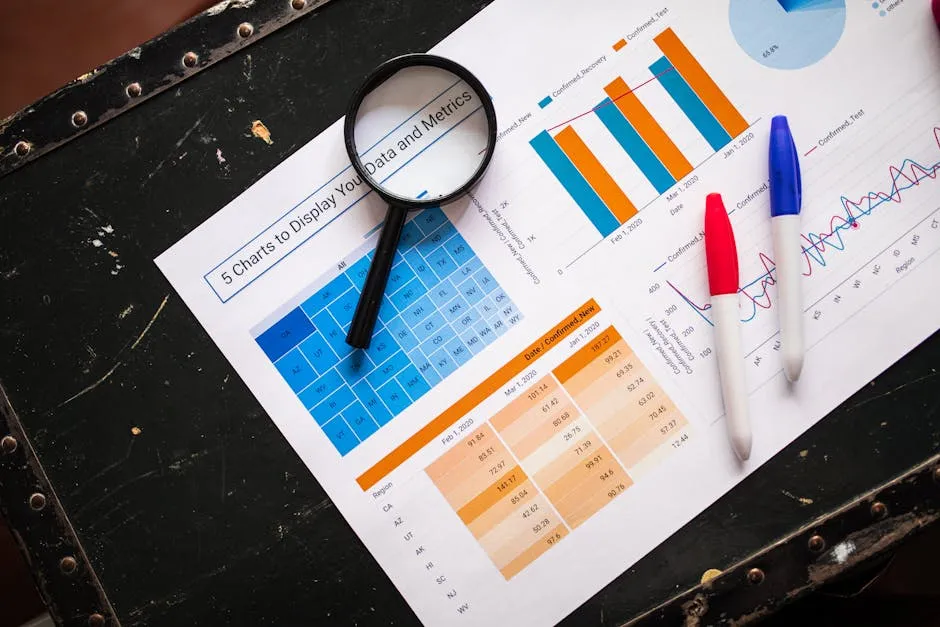Introduction
Choosing the right statistical tool is crucial in research. It directly influences the accuracy of your findings. Selecting an appropriate tool ensures your results are valid and reliable. However, many researchers struggle with this decision. Factors like data type and research goals complicate the selection process. Let’s simplify this journey together.
If you’re diving into the world of statistical analysis, you might want to check out R Programming for Data Science. It’s an excellent resource that will empower you to harness the full potential of R in your research. Plus, it’s a great way to impress your colleagues!

Summary and Overview
When selecting a statistical tool, consider several key factors. First, identify your data type: is it nominal, ordinal, interval, or ratio? This classification shapes the tests you can use. Next, clarify your research objectives. Are you comparing groups or examining relationships? Different goals require different statistical methods.
Statistical assumptions are another critical aspect. Each test has underlying assumptions about the data. Understanding these will help you choose wisely. This article will guide you through the process of selecting the right statistical method, detailing each consideration, from data types to research goals. We’ll also cover common pitfalls to avoid, ensuring your analysis is both effective and meaningful.
For those looking to get a solid grasp of statistics, Statistics for Dummies is a fantastic starting point. It breaks down complex concepts into digestible pieces, making it accessible for anyone, even those who thought statistics was a foreign language!

Understanding Statistical Tools
What Are Statistical Tools?
Statistical tools are methods used to analyze data. They help researchers make sense of complex information. The main goal is to uncover patterns and relationships within data.
There are two primary categories: descriptive and inferential statistics. Descriptive statistics summarize data. They include measures like mean, median, and mode. These provide a snapshot of the dataset.
If you’re looking to delve deeper into statistical methods, consider reading The Art of Statistics: Learning from Data. It’s an engaging read that will help you appreciate the nuances of data interpretation.

Types of Statistical Tools
Statistical tools can be divided into two broad types: parametric and non-parametric tests. Parametric tests assume data follows a specific distribution, usually normal. Common examples include t-tests and ANOVA. These tests are powerful when assumptions are met.
Non-parametric tests, on the other hand, don’t rely on strict assumptions about the data distribution. They are useful for ordinal or categorical data. Examples include the chi-square test and Mann-Whitney U test.
To further enhance your understanding of statistical analysis, consider checking out The Elements of Statistical Learning. It’s a comprehensive guide that dives into the theoretical aspects of statistics, perfect for those who want to elevate their analytical skills.

Assess Data Size and Complexity
Sample size plays a crucial role in selecting statistical tools. Larger samples often provide more reliable results. With a small sample, variability increases, which can lead to misleading conclusions. For instance, using t-tests on small datasets might not capture true population parameters. Therefore, it’s vital to consider the sample size when choosing your analysis method.
Complex research questions also demand careful tool matching. Simple questions might only require basic tests like the t-test. However, intricate questions may need multivariate analyses, such as regression or ANOVA. Aligning the complexity of your research with the right statistical tools ensures accurate and meaningful results. This alignment is key to drawing relevant conclusions from your data.
If you’re interested in multivariate analyses, you might find Statistical Methods for Research Workers an invaluable resource. It covers a variety of techniques and methodologies essential for any researcher.

Check Assumptions
Statistical tests come with specific assumptions that must be met for valid results. One common assumption is normality, meaning your data should ideally follow a bell-shaped curve. If your data is not normally distributed, results can be inaccurate. Another important assumption is homogeneity of variance, which states that different groups should have similar variances.
Violating these assumptions can lead to incorrect conclusions. For example, using a t-test on non-normally distributed data can yield misleading p-values. If your data doesn’t meet these assumptions, consider using non-parametric tests. These alternatives, while less powerful, can provide more reliable results when assumptions are violated. Always check assumptions before proceeding with analysis.
To further enhance your statistical toolkit, consider Discovering Statistics Using IBM SPSS Statistics. This book is tailored for those who prefer a more visual and user-friendly approach to statistical analysis.

Consider Software and User Expertise
When selecting statistical tools, consider the software available to you. Popular options include R, Python, and SPSS. Each software offers different features and functionalities. For example, R is powerful for advanced analyses but may require programming skills. In contrast, SPSS provides a more user-friendly interface, suitable for beginners.
If you’re looking to learn Python for data analysis, Python for Data Analysis is a must-read. It’s packed with practical examples that will have you crunching numbers in no time!
User expertise is another critical factor. If you’re new to statistics, complex tools may lead to confusion or misinterpretation. Choose software and tools that match your skill level. Familiarity with a specific software can enhance your analysis efficiency. Investing time in learning the right tools can significantly impact your research outcomes.

Practical Steps in Tool Selection
Step-by-Step Guide to Choosing a Statistical Test
1. Identify your research question: What are you trying to discover?
2. Determine your data type: Is it categorical, ordinal, or continuous?
3. Assess sample size: Are you working with a small or large dataset?
4. Check statistical assumptions: Does your data meet the necessary criteria?
5. Select appropriate software: Consider your familiarity with different statistical packages.
6. Choose the statistical test: Based on the previous steps, decide which test best fits your needs.
7. Conduct your analysis: Perform the test and interpret the results carefully.
8. Review and adjust: If results seem off, revisit your choices and assumptions.
Using a flowchart or decision tree can simplify this process. Visual aids can help clarify which tests to use based on your specific situation. By following these steps, you can make informed decisions about statistical tool selection that lead to meaningful insights.

Common Pitfalls in Statistical Tool Selection
Selecting the right statistical tools can be tricky. Many researchers make common mistakes that can skew their results. One major error is ignoring data type. Using a statistical test that doesn’t align with the data can lead to incorrect conclusions. For example, applying parametric tests on non-normally distributed data often results in misleading outcomes.
Another pitfall is overlooking assumptions. Each statistical method has specific assumptions, like normality and homogeneity of variance. Failing to check these can compromise your results. Always evaluate if your data meets these criteria before proceeding.
Many researchers also neglect the importance of sample size. Using small samples can exaggerate variability, leading to unreliable conclusions. Lastly, some may choose tools based on familiarity rather than suitability for their specific research questions. Always prioritize the method that best fits your analysis needs, even if it requires learning a new tool. Being aware of these pitfalls can enhance your research quality significantly.
If you’re ready to dive into the technical aspects of statistics, consider The Data Science Handbook. It’s a treasure trove of insights for both budding and seasoned data scientists!

Conclusion
Proper statistical tool selection is vital for credible research outcomes. It ensures your findings are valid and reliable, ultimately influencing the integrity of your conclusions. Researchers should strive to continually learn about statistical methods. Consulting with statisticians or experts can provide valuable insights and guidance when faced with complex analyses. Remember, the right tool can make all the difference in your research journey.
Key Considerations for Tool Selection
Selecting the right statistical tool is essential for effective data analysis. A poor choice can lead to significant errors and misinterpretation of results. This section highlights key considerations to help guide your decision.
Understanding the importance of statistical tool selection cannot be overstated. The right tool can enhance the validity of your findings and provide clearer insights. Conversely, using an inappropriate method can compromise research integrity.
There are various types of statistical tests available, each suited for specific applications. For instance, t-tests are ideal for comparing means between two groups, while ANOVA is used for three or more groups. Familiarizing yourself with these tests is vital for appropriate selection.
Your research objectives significantly influence the test choice. Are you comparing groups, establishing relationships, or testing hypotheses? Clearly defining your objectives will streamline the selection process.
Data characteristics also play a crucial role. The type of data you have—nominal, ordinal, interval, or ratio—will dictate suitable statistical methods. For example, non-parametric tests are preferred for ordinal data, while parametric tests apply to interval or ratio data.
Common pitfalls in statistical analysis include neglecting assumptions and misjudging sample size. Research shows that up to 30% of researchers misuse statistical methods, leading to flawed conclusions. Always verify the assumptions of your chosen tests, such as normality and homogeneity of variance.
For a solid grounding in statistical inference, check out Statistical Inference. It’s a classic that every researcher should have in their library!

In conclusion, choose your statistical tools carefully. Consider your research objectives, data characteristics, and common pitfalls. A well-informed selection will enhance the quality of your analysis and the reliability of your conclusions. If you’ve experienced challenges in tool selection, share your story in the comments. For more insights on tips for effective data analysis in economics and statistics, consider subscribing to our newsletter!
Please let us know what you think about our content by leaving a comment down below!
Thank you for reading till here 🙂
All images from Pexels




